
20 Words You Need to Know Before Visiting a Japanese Shinto Shrine
Planning to travel to Japan and visit a Shinto shrine? Here are 20 words related to Japanese Shinto shrines that will help you understand the meaning behind some of the Shinto symbols you'll encounter and learn more about the Shinto religious beliefs.
This post may contain affiliate links. If you buy through them, we may earn a commission at no additional cost to you.
Shinto shrines, Jinja (神社) in Japanese, are scattered throughout Japan. It shows how deeply rooted Shintoism was in the people's lives. All those Shinto shrines's architecture have a lot of common, but do you know what their names are, and what they are there for? Here are 20 points explaining Shinto shrine architecture!
1. Forests around the Shinto shrine
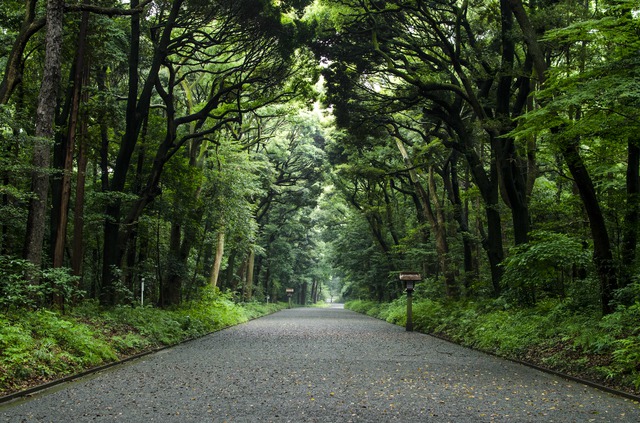
Since forests and mountains were considered sacred, many Shinto shrines were built inside them. They are called Chinjyu no Mori (鎮守の森). They also have a Goshinboku (御神木), which is a tree that is worshiped.
2. Torii

Torii (鳥居) is an object that makes a borderline between the real world and the sacred world. It also is an entrance to the sacred region. The image above is the Torii, called Kane no Torii (銅の鳥居) in Kinpusenji (金峯山寺) in Nara. The Torii itself is named as an important cultural asset.
Our Top Tips
JR Pass for Whole Japan
Explore Japan in the most convenient and economical way with a Japan Rail Pass! It is valid for the majority of railways and local buses operated by JR.
3. Chouzuya
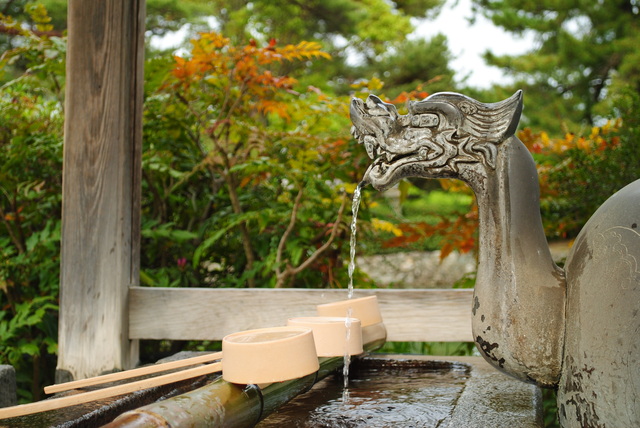
Chouzuya (手水舎) is a square container filled with water. Visitors to the Shinto shrine must purify their hands and mouth with this water. In Shintoism, unholy things, called Kegare (穢れ) are thought to be come from the outside. It is important to be clean, physically and metaphorically when entering a Shinto shrine.
4. Sandou
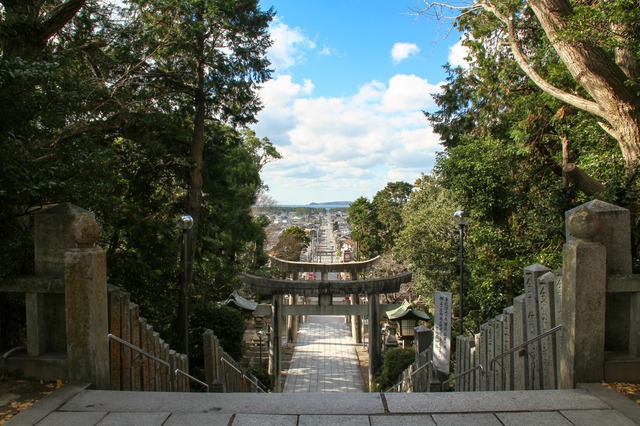
Sandou (参道) is the entrance path to the main shrine. It is usually built with stones in one straight line. If the shrine is in the mountains, the Sandou won't be built by stones, but will be tamed soil paths.
5. Shamusho
Shamusho (社務所) is the place where shrine business, such as dealing with guests to the shrine, selling Omamori, and so on takes place. The size of the Shamusho depends on the shrine. The image above is the Shamusho of Wakamiya Hachimangu in Kouchi.
6. Tourou
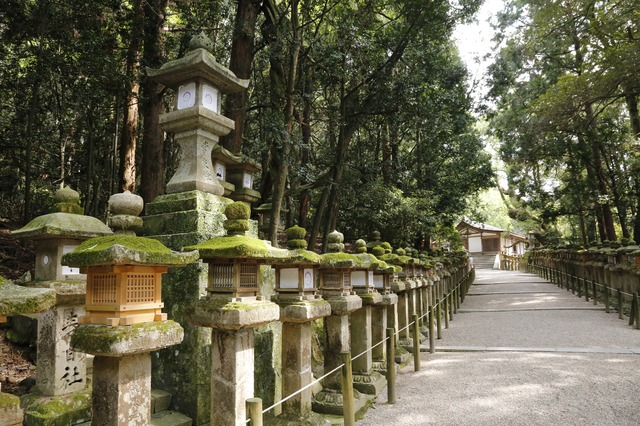
Tourou (灯篭) is a traditional Japanese lamp. It is placed along the Sandou, to light up the paths. Originally, it came with Buddhism during the Nara period and was used in temples, but by the Heian period, it was used for lighting in Shinto shrines too.
7. Komainu
Komainu (狛犬) are fictional Japanese beasts that look like lions and dogs. Stone statues of them are placed in the entrance of the shrines, one on each side. They are both looking into each other, or have their back against the shrine and are facing the visitors. They are said to protect the shrines. Other beasts are used for this purpose too, such as boars, dragons, foxes, wolves, and tigers. These animals are called Shinshi (神使).
Our Top Tips
Japan Shinkansen, Narita Express (N'EX) & Express Train Tickets
Plan ahead by booking your shinkansen, airport train, and express train tickets online in English. Have the tickets sent to you by mail or collect them at the station once you're in Japan.
8. Shimenawa
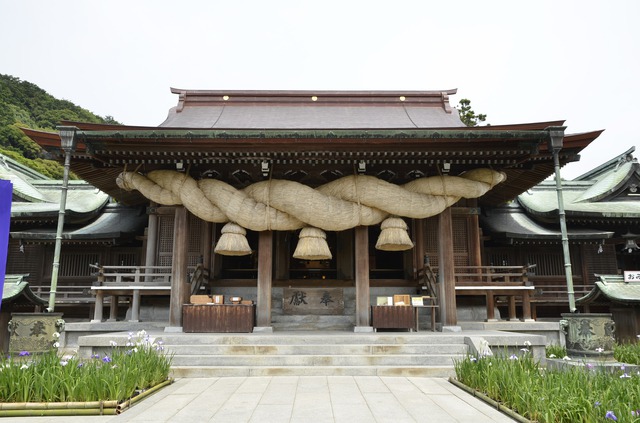
Shimenawa is a rope twisted around things, or draped across a building. Shimenawa is a tool used in Shinto rituals. It has the purpose of creating boundaries from the real world to the sacred world, bouncing off Kegare, and showing that the god of the shrine is here.
9. Omikoshi
Omikoshi (御神輿) is an object similar to a cart-like vehicle used in the Heian period. It is a vehicle where the object of worship, or gods, ride during the Matsuri. Also called a Shinyo (神輿).
10. Haiden
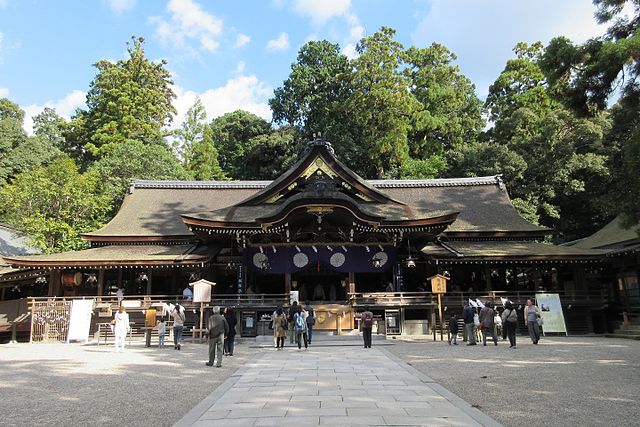
Haiden are built in front of the main shrine for Sanpai (参拝). Sanpai is an act of paying respect to the Shinto shrine. The way of Sanpai differs from shrines, but it mostly involves bowing, clapping hands, throwing money into a box, and ringing a bell.
11. Saisenbako
Saisenbako (賽銭箱) is a box with vertical bars. It is usually placed near the Haiden. While performing Sanpai, visitors will throw in money to show their respect. Usually coins are used. Some superstitious people use 5 yen coins, since the pronunciation of it is the same sound of Goen (ご縁). Goen is a Buddhism term explaining the ties between people and objects.
12. Suzu no O
13. Honden
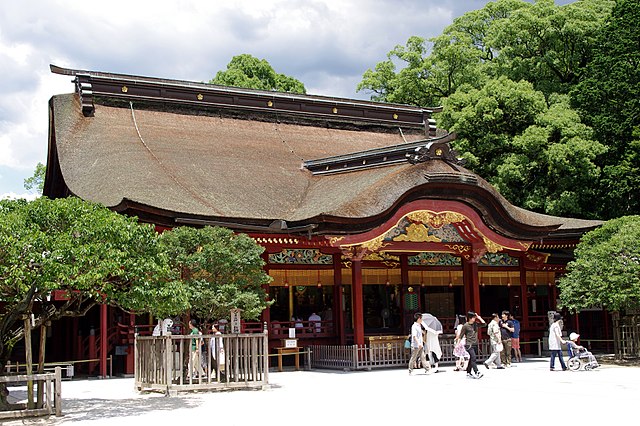
Honden (本殿) is the main shrine. This is where the object of worship, Shintai (神体) in Japanese, is placed. It is also called a Shinden (神殿). The image above is the Honden of Daizaifu Tenmanguu (太宰府天満宮) in Fukuoka.
14. Kaguraden
15. Sessha/Massha
Sessha/Massha (摂社/末社) are shrines besides the main shrines built within the shrine's grounds. The object of worship in these shrines may have relations to the object of worship in the main shrine. It is smaller in size compared to the main shrine. Also called Edamiya (枝宮) or Edayashiro (枝社).
16. Sekihi
17. Omamori
18. Ema
19. Ofuda
20. Hamaya
The information in this article is accurate at the time of publication.



